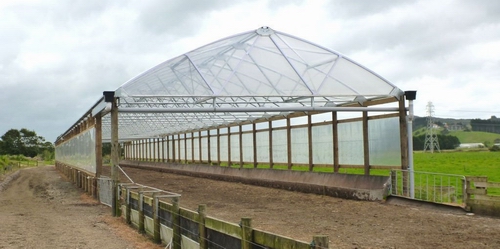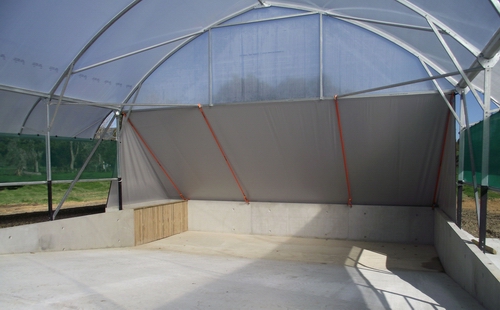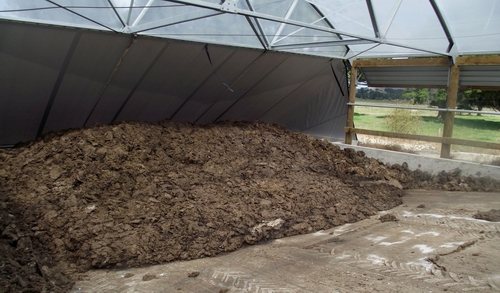Feed pads
Pad design
The size and shape of the pad depends on the number of cows, hours it is likely to be used for, and the area of land available – close to the yard with good cow flow is ideal.
The cows' ability to lie down is the main factor when it comes to determining the area needed, if the pad is to be used for stand-off. Cows need to be able to lie down for at least eight hours per day.
Wastewater
The design and infrastructure needs to include effective collection and treatment/disposal of wastewater from the pad, entry/exit/transit races and silage/supplementary feed storage bunkers. Regional rules for wastewater disposal from these areas are the same as those for wastewater from the dairy.
Characteristics
The main differences between wastewater from a feed/stand-off pad and the dairy are:
- Higher solids content;
- Higher volume; and
- Higher nutrient content.
Volume
The volume of wastewater generated from a pad:
- Varies depending on the construction material of the pad;
- Is directly related to stock numbers and the length of time animals are on the pad;
- Is increased by lost feed solids when supplements are fed;
- Is directly related to the method used for cleaning, that is, scraping versus washing;
- Can be much higher than from the dairy alone; and
- Is greatly increased during rain (if the pad has no roof).
Stormwater
Wastewater systems must be designed to handle stormwater volumes when it's not practical to divert. In Northland, rainfall events with intensities of 10mm/hour occur frequently and falls of 3-60mm/hour are common.
For example: 10mm falling on a 1000m2 pad will generate 10m3 of stormwater. This is the same as the total daily wastewater volume from a dairy milking 200 cows.
Stormwater from the pad can only be diverted when:
- stock are not on the pad;
- the pad is clean.
Some Northland farmers have fitted roofs to existing pads to improve cow comfort and reduce wastewater volumes – by decreasing stormwater on the pad and dry-scraping the effluent.
Covered pads
 Covering pads and dry-scraping the effluent, greatly decreases wastewater volumes.
Covering pads and dry-scraping the effluent, greatly decreases wastewater volumes.
Advantages of roofing include:
- Improved cow comfort;
- Cows can be stood-off for longer;
- Further reductions in pasture damage;
- Cows eat less pasture;
- Less feed wastage due to rain; and
- Big reductions in effluent volumes.
Effluent solids
Solids from pads can be:
- Retained in a separate pond;
- Retained behind a "weeping wall"; or
- Mechanically separated.
Find more information on solids separation
 A new, covered feedpad with solids bunker and weeping wall.
A new, covered feedpad with solids bunker and weeping wall.
 Covered feedpad with effluent dry-scraped into a bunker, with liquid draining through a weeping wall.
Covered feedpad with effluent dry-scraped into a bunker, with liquid draining through a weeping wall.
Cleaning the pad
A number of methods are used to clean pads; based on infrastructure, design, and practicality.
These methods include:
| Method | Advantages | Disadvantages | |
| Scraping | A rubber blade is used to manually scrape (can be attached to a quad bike/small tractor). |
|
|
| Scraping with solids separation |
Solids scraped into a covered bunker, either:
|
Separates solid and liquid effluent for ease of land application. |
|
| Hosing | Hand-held hose, washing effluent from the pad to the effluent system. |
|
|
| Flood wash | A high volume/low pressure deluge cleaning system; typically water is released by gravity from tanks above the pad. |
|
|
Table adapted from IPENZ Practice Note 27, p.177 (available from the DairyNZ website).
